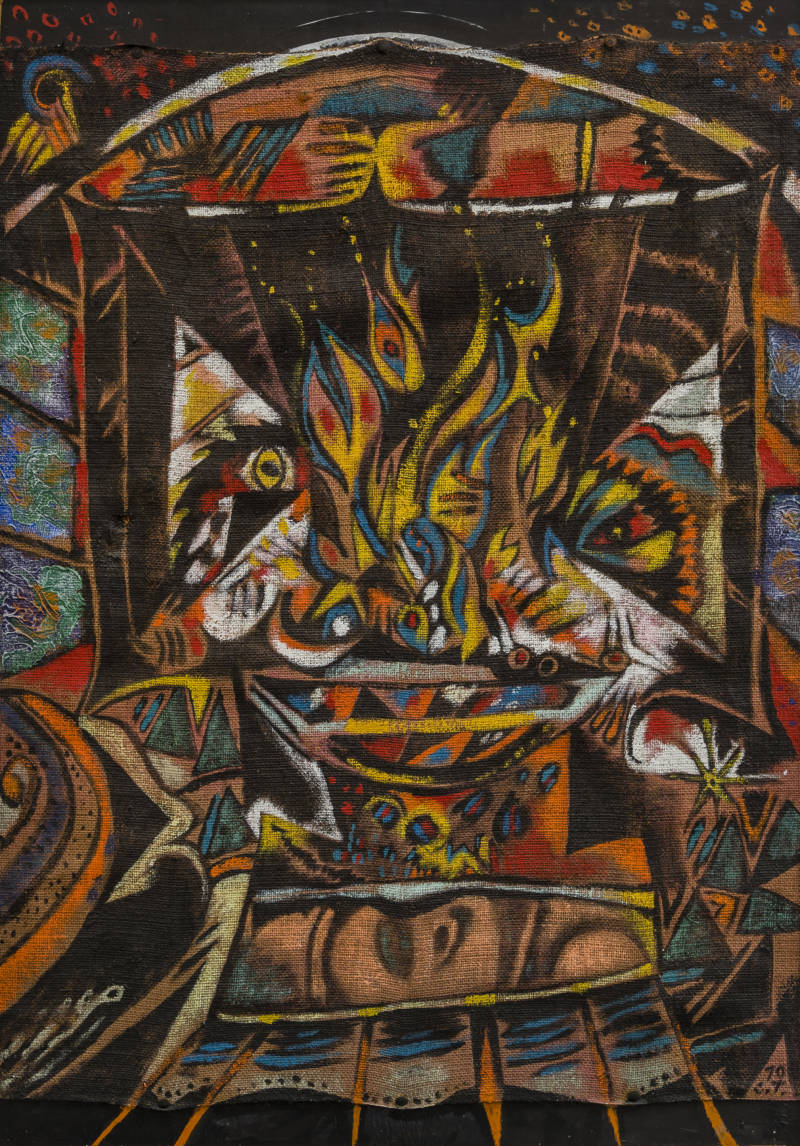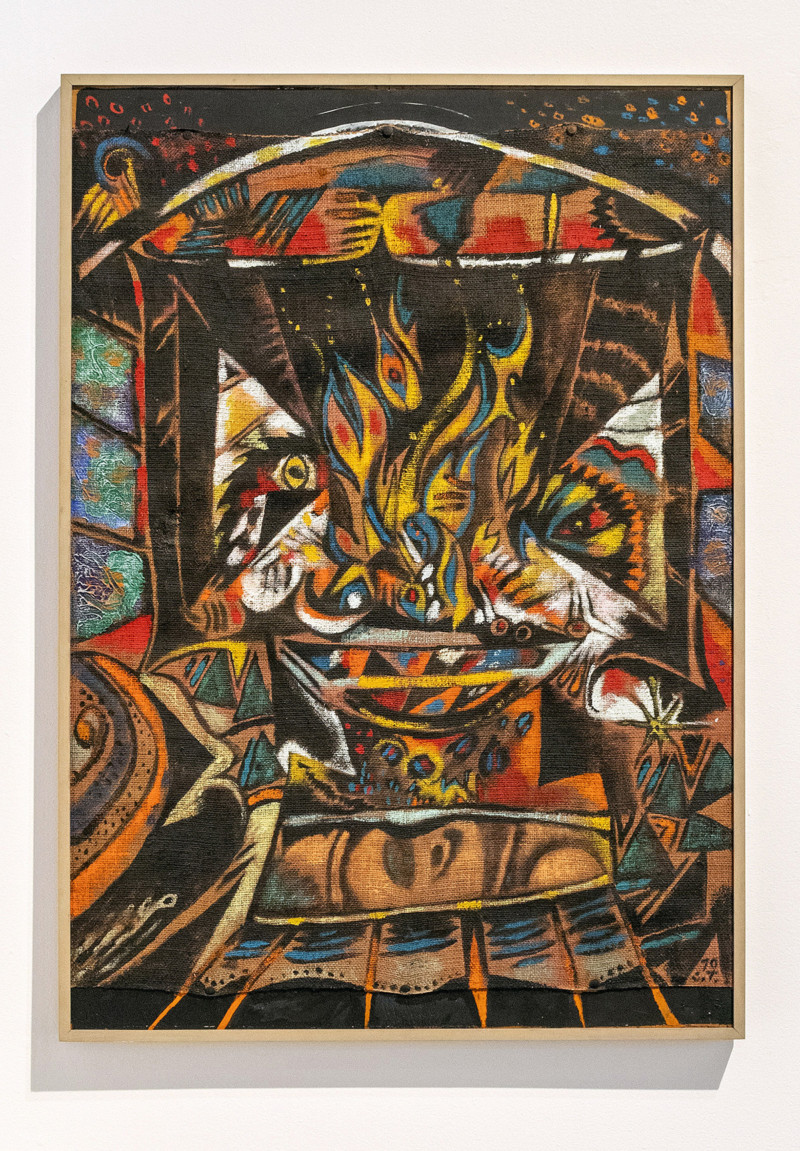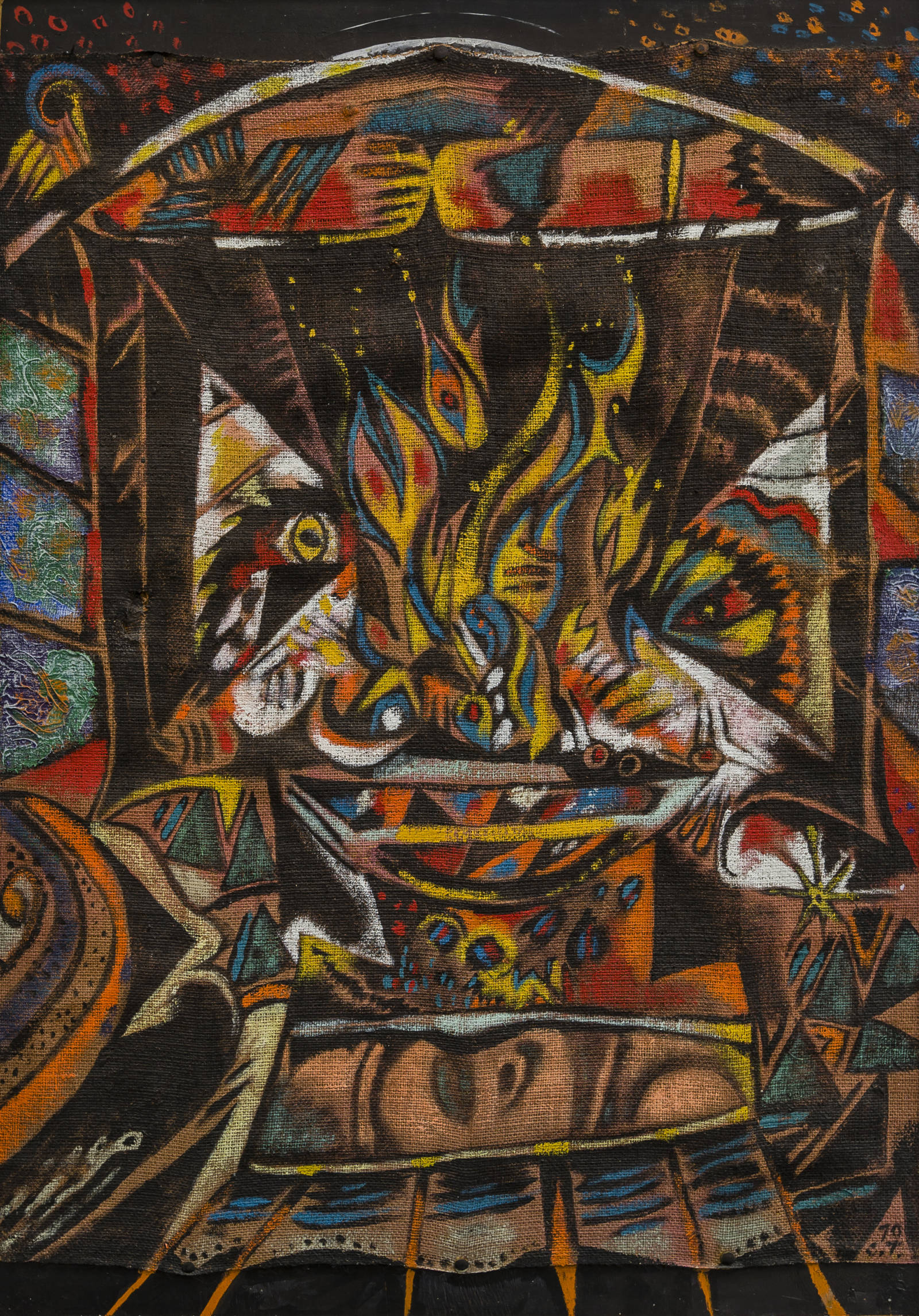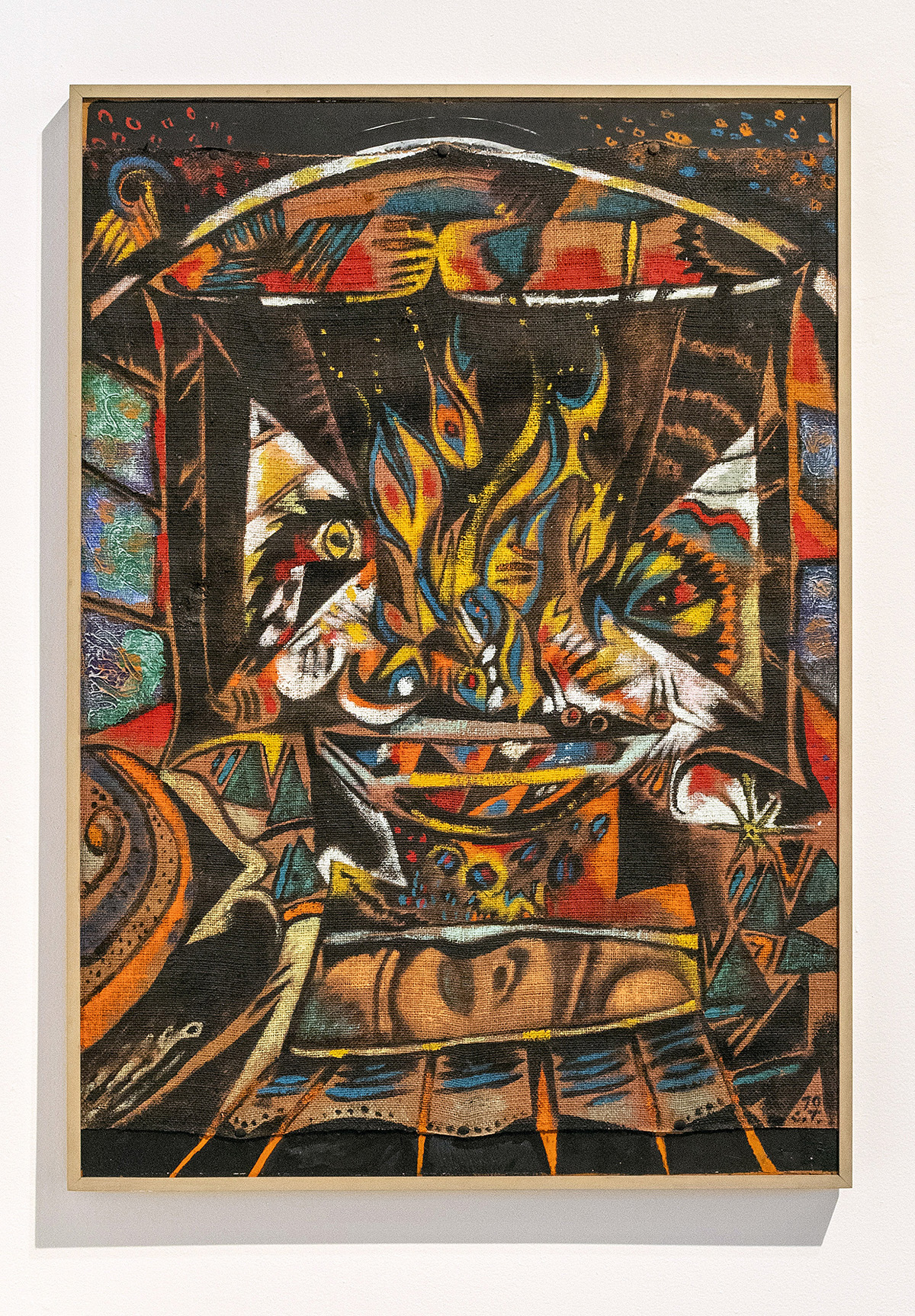CLAIRMONT, Philip;
Fireplace
1970
Oil on hessian on board
1012 x 710mm


Fireplace comes from the body of paintings of domestic subjects with which Philip Clairmont first came to prominence. He invested suburban images with a sense of disorder, threat, and, above all, intense energy, deliberately subverting notions of quiet and orderly family life. As Jim and Mary Barr have pointed out, works like this show the influence not only of expressionist painting but also of surrealist works by artists like André Masson.[1]
Clairmont’s son, Orlando, notes that the artist discussed the motif of the fireplace in a 1979 interview for the television series Kaleidoscope, commenting, ‘The fireplace is another self-portrait in a way. It’s a central thing, a focussing thing … the kind of thing you sit for hours in front of, looking at, and watching marvellous pictures forming in the flames … I think it’s a great image for painting.’
This work is a forerunner of a large painting of an interior completed for an Ōtautahi nightclub called 15 Jellies. The painting survived a fire and was later separated into three works, becoming the Nightclub Triptych (1971–72). Fireplace (1971) is at Christchurch Art Gallery Te Puna o Waiwhetū (72/18); Fireplace (1972) is at Auckland Art Gallery Toi o Tāmaki (1974/6/1); and Lampshade (1971) is at the Museum of New Zealand Te Papa Tongarewa (1991-0007-1).
[1] Jim Barr and Mary Barr, Philip Clairmont (Whanganui: Sarjeant Gallery, 1987), 22.
Exhibition History
Gathered Voices: Highlights from the Fletcher Trust Collection, New Zealand Portrait Gallery Te Pūkenga Whakaata, Te Whanganui-a-Tara, 15 September to 11 December 2022 (toured)
Provenance
1984–
Challenge Collection (later Fletcher Trust Collection), purchased from Webb’s, Tāmaki Makaurau, December 1984
–1984
Unknown


